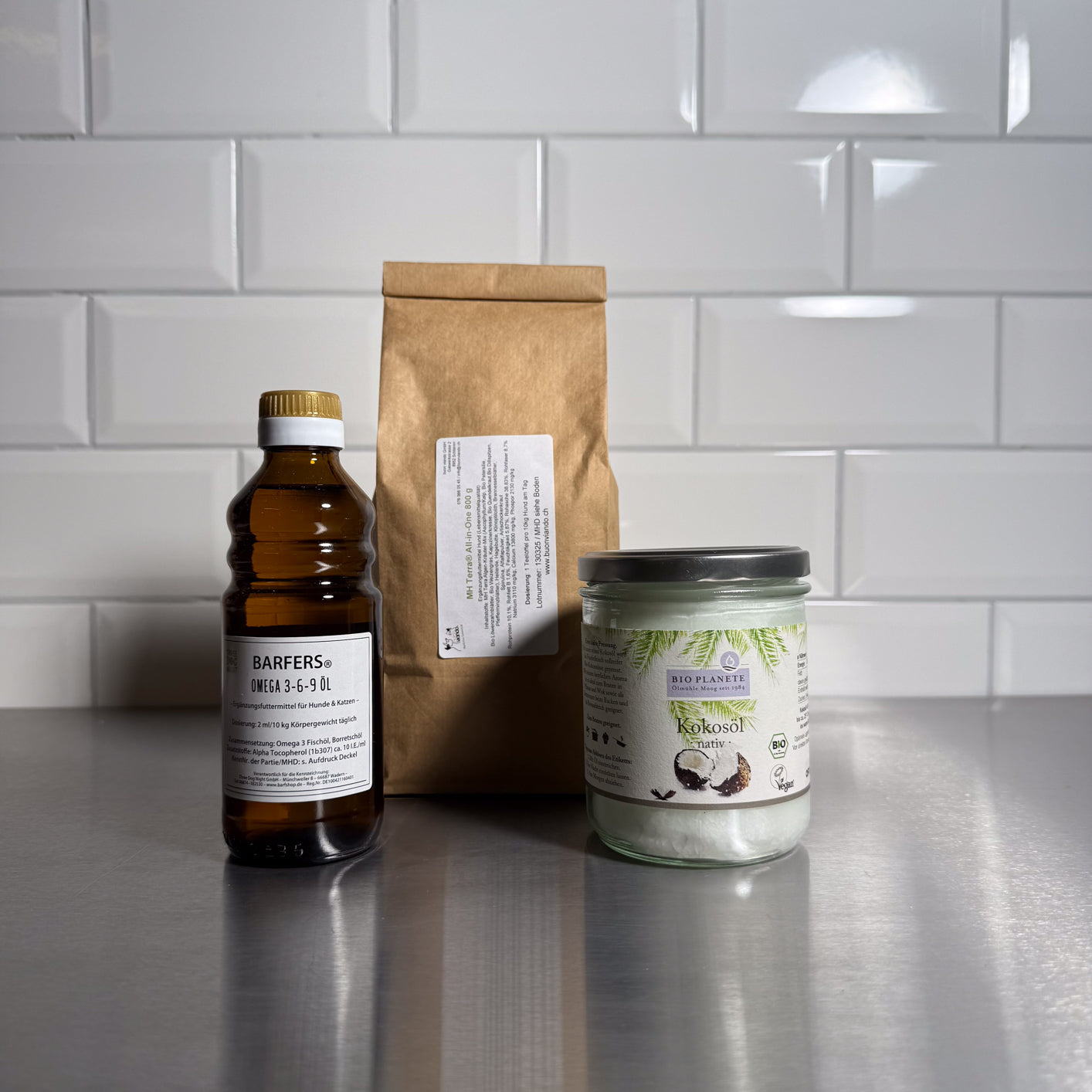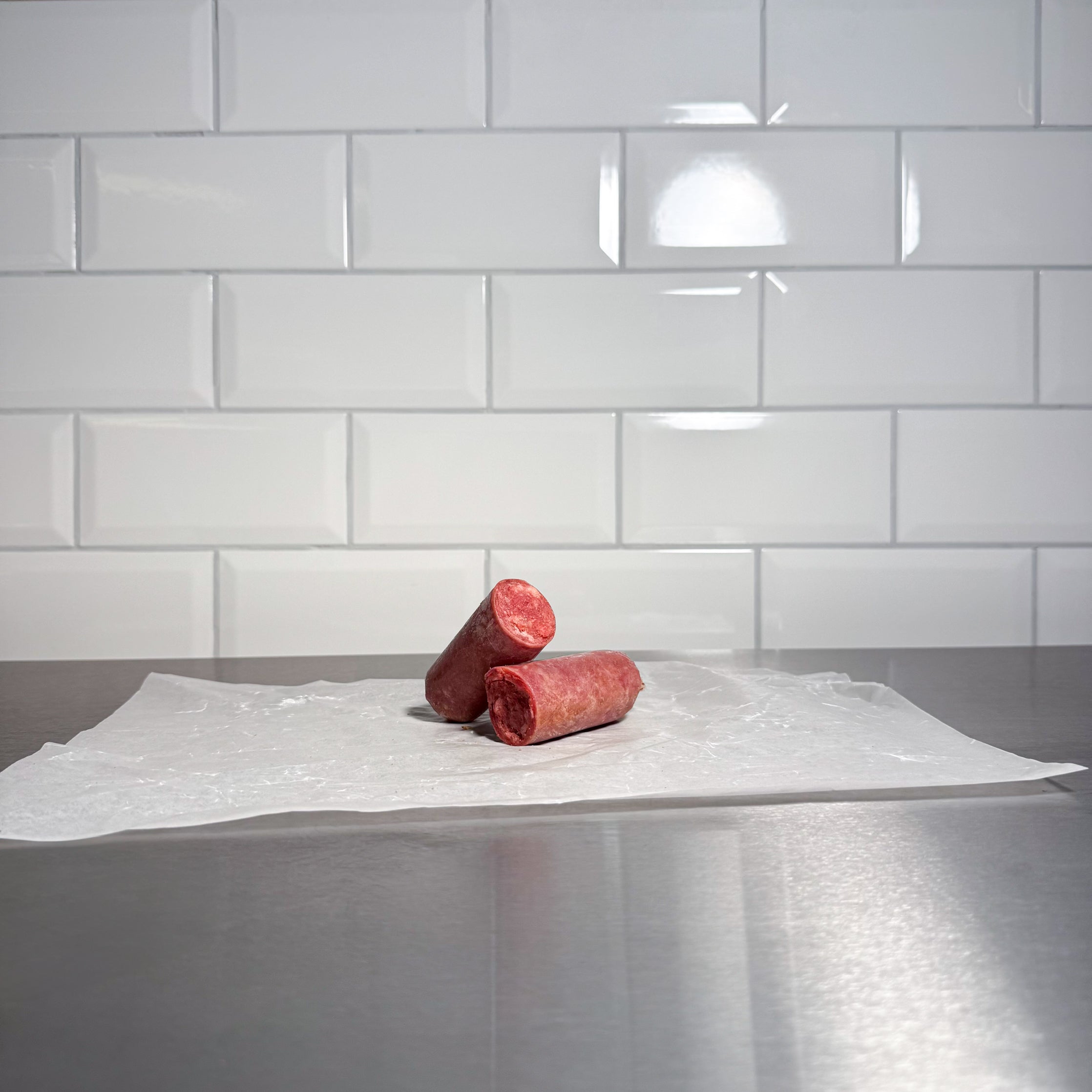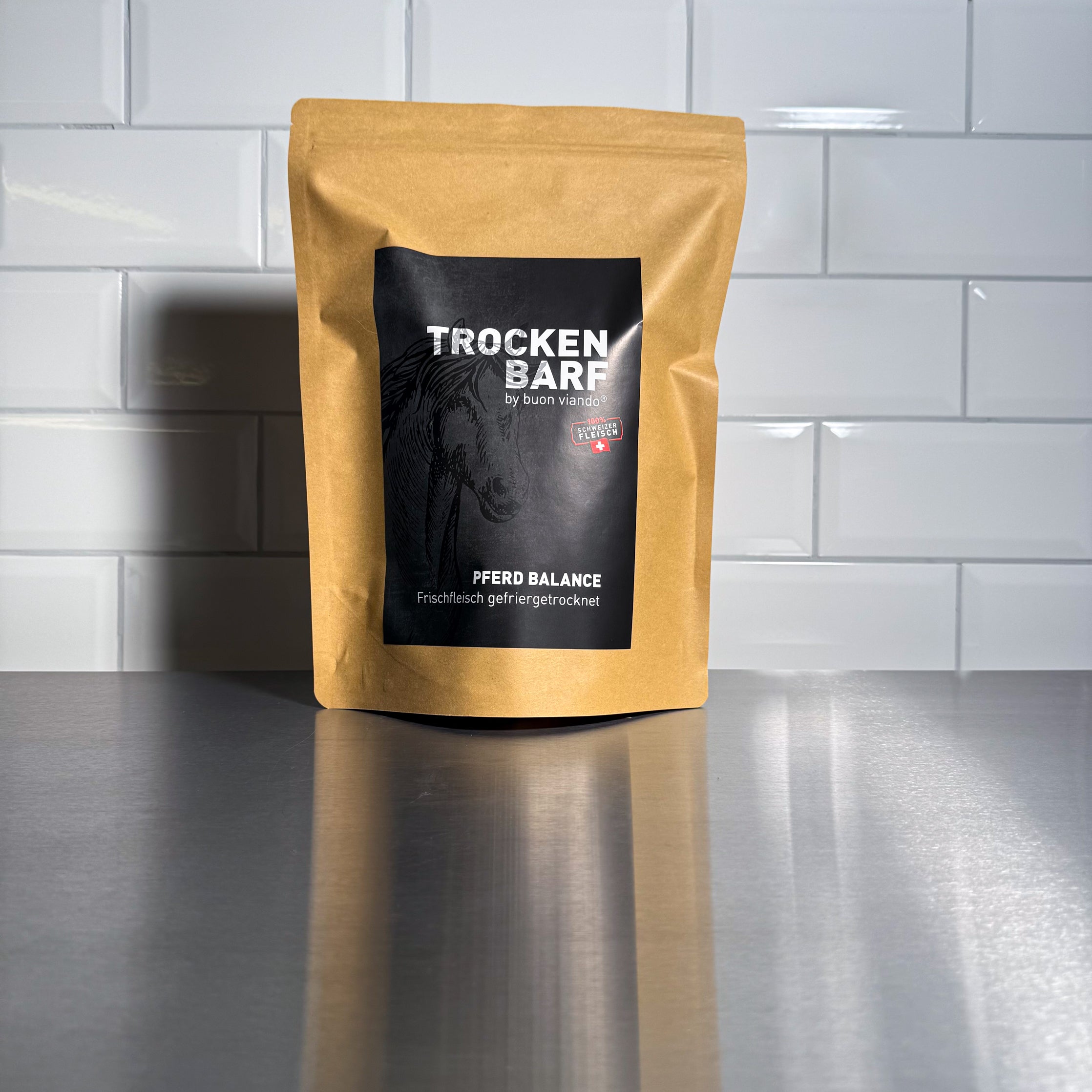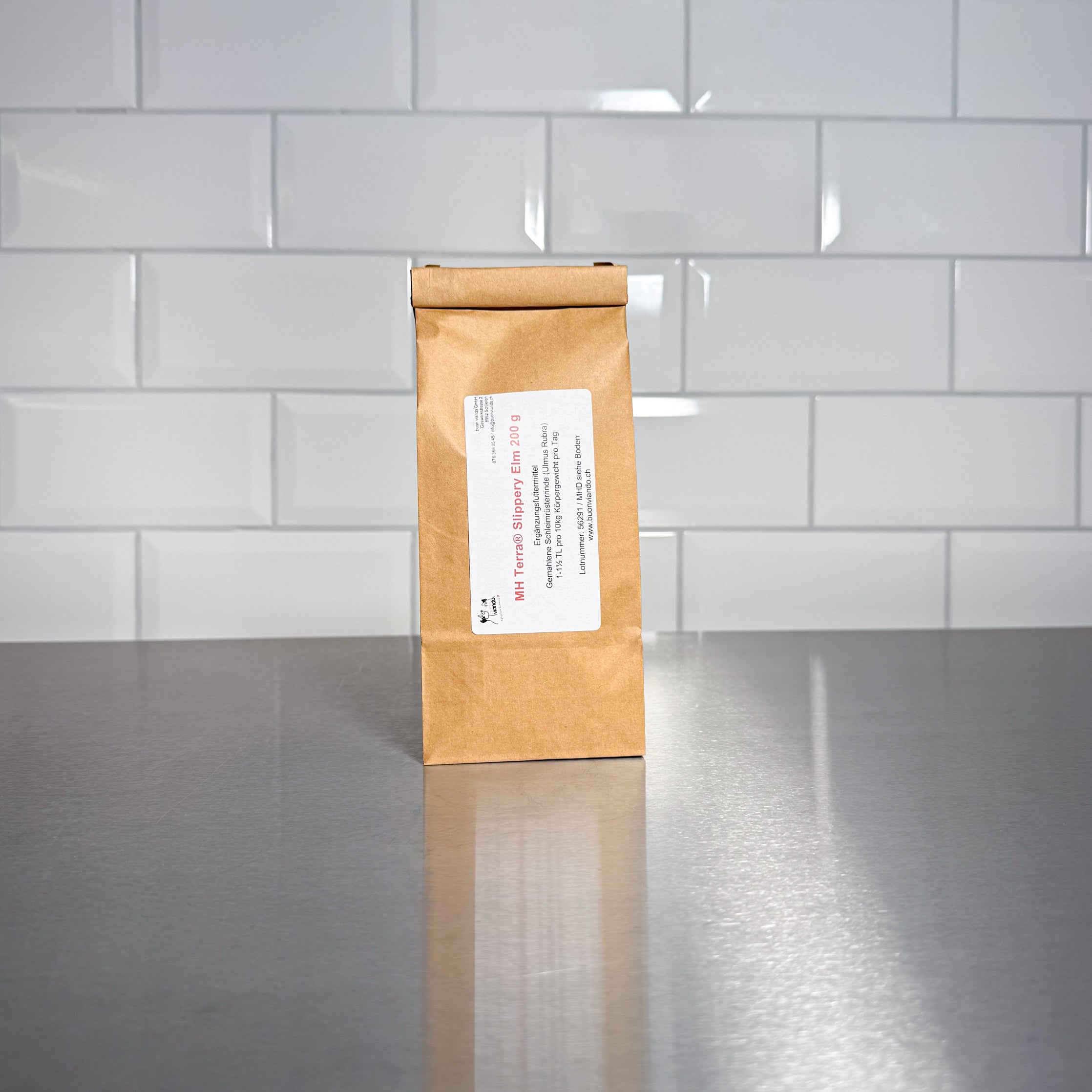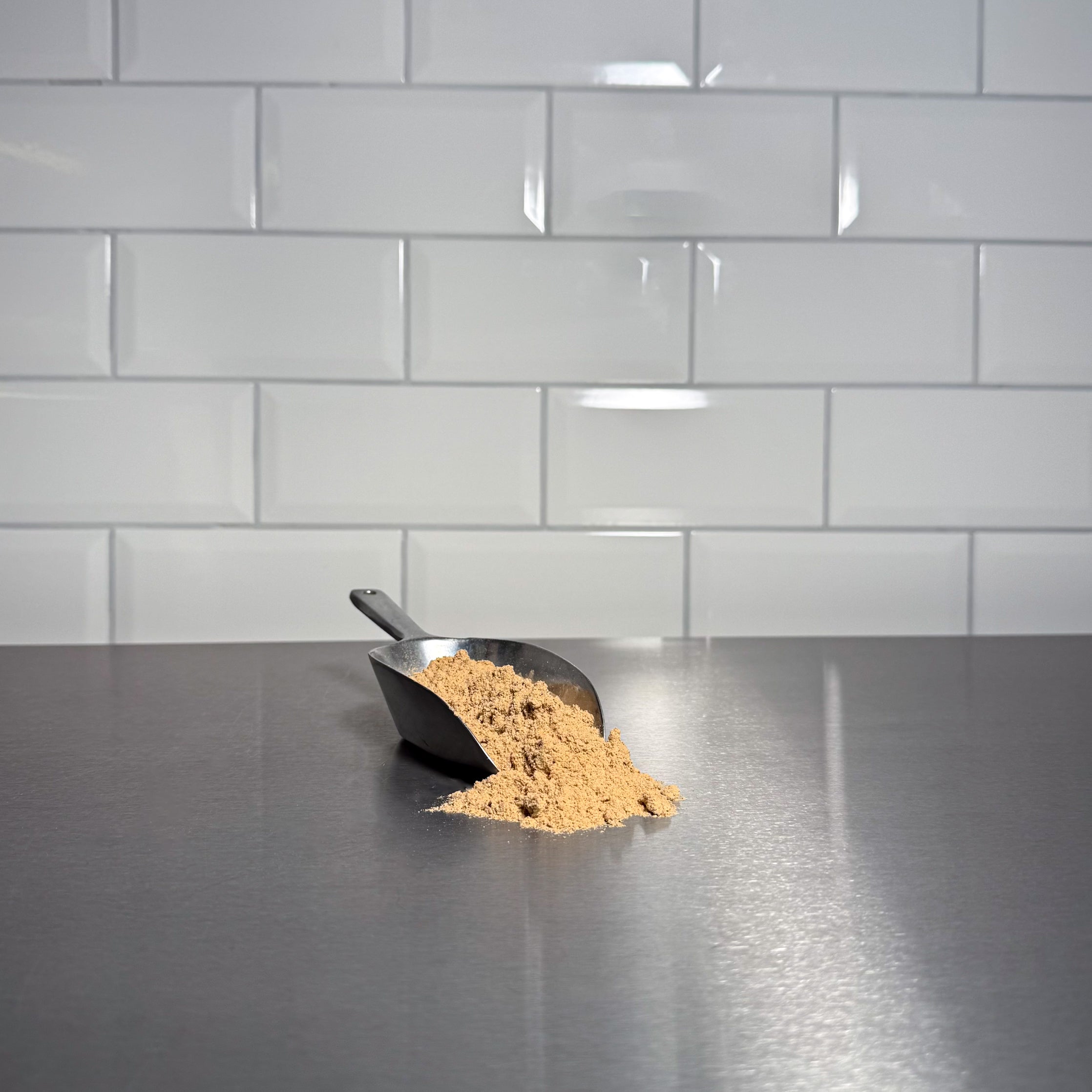What is Slippery Elm?
The name Slippery Elm refers to the inner bark of the American Red Elm (Ulmus rubra). This bark contains a special combination of mucilage, tannins, bitter substances, and trace elements.
When the bark comes into contact with water, it forms a viscous mucus. And this is precisely what makes Slippery Elm so valuable – it forms a protective film over irritated mucous membranes and supports their regeneration.
Effects on Dogs
Slippery Elm has a variety of uses for dogs:
- Relieves irritations in gastritis, reflux, and heartburn
- Soothes diarrhea, soft stools, or irritations of the gastrointestinal mucosa
- Protective after medication (e.g., antibiotics, painkillers)
- As an adjunct to intestinal cleansing or diet changes
The advantage: Slippery Elm works gently without damaging the intestinal flora—in fact, it provides additional protection.
For Cats—only with sensitivity
Cats also benefit from its protective effect—however, they are known to be little gourmets and very sensitive. Special care is also required with cats, as mucus can also impair the absorption of medications and nutrients.
Therefore:
- Only use as a course of treatment (max. 5–7 days)
- Always keep a distance from medication (at least 1–2 hours)
- Test acceptance slowly – many cats reject the mucus.
Application & Dosage
Slippery Elm is always freshly mixed:
1. Mix approximately 1/4–1/2 teaspoon of powder (just a pinch for cats) with a little warm water to form a mucus.
2. Let it swell for 5–10 minutes.
3. Add directly to the mouth or mix with food.
- TIP: For better acceptance, a little food can be mixed in. But ideally, always feed the entire meal at a distance from Slippery Elm so that the protective film can do its job.
- 1-2 times daily as needed
- Never as a permanent solution – a maximum of 10 days at a time, then take a break
Conclusion:
Slippery elm is a proven remedy for dogs with gastrointestinal problems – and with a little sensitivity, it can also be used in cats. It is important to use it carefully, because despite its natural origin, it is an effective remedy that should be used responsibly.
As always: If you are unsure, consult an experienced nutritionist or veterinary alternative practitioner.




